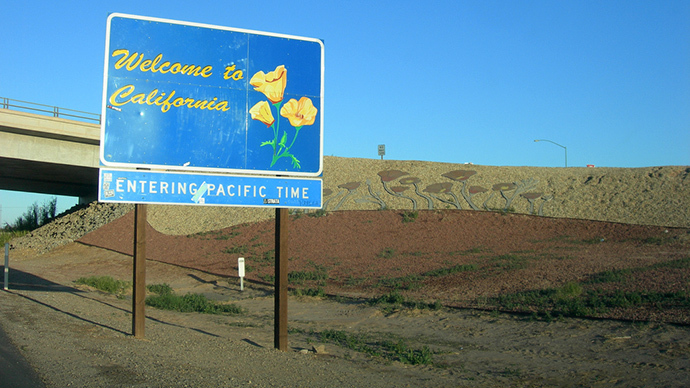‘Six Californias’ plan to split up most populous US state gets green light

A wealthy US investor got the go-ahead for his campaign to carve up California into six separate states, according to the Secretary of State's Office. Critics call the plan just another scheme for the wealthy to hoard tax dollars.
While initiatives to split up America’s most populated state have been floated since at least around the time of the Civil War, Silicon Valley venture capitalist, Tim Draper, may just have the clout and connections to pull it off.
Draper, who has made a fortune investing in internet startups, like Skype and Hotmail, believes that California is simply too populated and diverse to adequately address the demands of its residents, according to Draper's plan.
"Vast parts of our state are poorly served by a representative government dominated by a large number of elected representatives from a small part of our state, both geographically and economically," the plan reads.
The initiative aims to carve up the state of some 38 million inhabitants into "six smaller state governments, while preserving the historical boundaries of the various counties, cities and towns."
With the current structure, California is "ungovernable," Draper told USA Today.
"'Six Californias' allows a refresh," he added.
If Draper’s plans for California become a reality, the bulk of the state’s wealth, centered on Silicon Valley, home to a number of household tech names, including Google and Facebook, and South California, which is the seat of Hollywood and the US entertainment industry.
Jefferson, North California, West California and South California would be forced to fight over a dramatically reduced tax pie.
Tax haven California-style?
Instead of redressing the myriad problems now affecting the citizens of California, however, Draper believes carving up the state is the answer.
In a recent interview, the managing partner for Draper Fisher Jurvetson said California’s poorest regions “are not happy” because the system is “not working for them.”
“So if they had their own state, I believe all of those states would become wealthier. And I believe by managing their own state, they will become much more successful,” Draper told Time.
Although Draper's plan encourages "regional cooperation," the six-state scheme will also create competition between the states, which, according to the plan, “will lead to better and more responsive governance."
That means that states with high-growth sectors, like the proposed state of Silicon Valley, which in 2012 ranked eighth in global GDP rankings, according to the Center for Continuing Study of the California Economy, and the state of Central California, home of Hollywood, would have an unfair advantage when it comes to collecting tax revenue.
Indeed, critics say the ‘Six Californias’ campaign is nothing more than a scheme for making sure that the taxes of wealthy individuals like Draper gets ‘redistributed’ inside their own affluent neighborhoods.
The proposed initiative comes at a time when an increasing number of corporations – many of them from Silicon Valley - are hiding their tax dollars overseas, avoiding the tax man altogether.
The top 10 corporate tax avoiders happen to be tech companies:
1. Microsoft, $76.4 billion
2. IBM, $44.4 billion
3. Cisco Systems, $41.3 billion
4. Apple, $40.4 billion
5. Hewlett-Packard, $33.4 billion
6. Google, $33.3 billion
7. Oracle, $26.2 billion
8. Dell, $19.0 billion
9. Intel, $17.5 billion
10. Qualcomm, $16.4 billion
Source: Bloomberg, August 2013
Draper’s initiative will require at least 807,615 petition signers, or 8 percent of the total votes cast in the 2010 gubernatorial elections, by July 18 to make it on to the November ballot.














